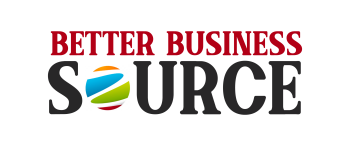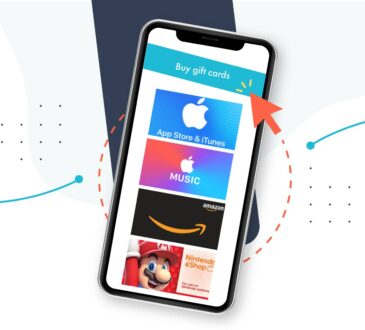
Hiring is exciting. It means your business is growing, there’s more work to be done, and you’re ready to welcome new faces to the team. But let’s be honest: it can also be a real headache.
If you’re manually posting job ads, filtering through CVs one by one, and juggling emails just to schedule interviews, you know how time-consuming recruitment can be. Add onboarding to the mix—contracts, payroll setup, employee handbooks—and you’ve got a full-time job in HR alone.
This is where a Human Resource Management System (HRMS) can work wonders. For growing businesses in Singapore, automating hiring and onboarding means improving the experience for both employers and new hires, and laying down scalable systems as your business expands.
What Is an HRMS, Anyway?
An HRMS is a software solution that helps manage all things related to your workforce, recruitment, payroll, leave, performance reviews, training, and more, all in one system.
When it comes to hiring and onboarding, HRMS tools like Million can:
- Post job listings across multiple platforms
- Filter and track applications
- Schedule interviews
- Generate offer letters and contracts
- Collect onboarding documents
- Enrol new employees into payroll and leave systems
Instead of handling ten tasks across five platforms (or worse, your inbox), you get a centralised, automated workflow that just works.
Why Hiring Gets Complicated for Growing Businesses
Small businesses often start out with informal hiring processes. A WhatsApp message here, a spreadsheet there—and that’s fine when you’re hiring one or two people a year.
But once you start growing—expanding departments, launching new products, or opening new outlets, things get messy quickly:
- You’re hiring multiple roles at once
- You’re trying to onboard people quickly to keep up with demand
- You want to maintain consistency and professionalism in your hiring process
Without a system in place, it’s easy to lose track of applications, delay interviews, or forget to collect necessary documents—all of which leave a bad impression on potential hires.
How HRMS Automates the Hiring Process
Here’s where the magic begins. A modern HRMS helps you manage the recruitment pipeline from start to finish:
1. Job Posting Across Platforms
With an HRMS, you can create a job listing and post it directly to multiple job portals (like JobStreet, LinkedIn, or MyCareersFuture) from one dashboard. No more logging into each site separately.
Many platforms also let you embed job listings on your own website, so candidates can apply directly without sending emails.
2. Applicant Tracking and Filtering
Instead of drowning in a sea of emails, an HRMS neatly organises all incoming applications. You can:
- View CVs and cover letters in one place
- Sort candidates by role, qualification, or experience
- Tag, rate, and comment on applications
- Collaborate with hiring managers on decisions
Bonus: Some systems offer AI-powered resume screening, helping you spot top candidates faster.
3. Interview Scheduling Made Easy
No more back-and-forth emails trying to find a meeting slot. Most HRMS tools allow:
- Automated scheduling based on your calendar
- Email or SMS notifications to candidates
- Built-in video interview features (for remote roles)
It’s efficient, professional, and saves everyone time.
4. Offer Letter Generation and e-Signatures
Once you’ve found the right candidate, you can generate a custom offer letter using preloaded templates, add salary and benefits info, and send it for digital signing—all within the system.
This not only speeds things up but ensures consistency across all new hire documents.
And Then Comes Onboarding…
Hiring is just the beginning. Getting someone productive in their first week is another story altogether. That’s where onboarding automation really shines.
5. Digital Document Collection
No more chasing down IC copies or manually uploading documents. HRMS platforms can:
- Send onboarding checklists to new hires
- Collect required documents digitally
- Store everything in one secure profile
This means everything’s ready by Day One, without a mountain of paperwork.
6. Auto-Enrolment into Payroll and Leave Systems
An integrated HRMS can instantly feed new hire data into your payroll system, set up tax details, and assign them to the correct leave entitlements—all with just a few clicks.
You avoid data entry errors and ensure that your employees are paid correctly from the start.
7. Assigning Onboarding Tasks and Resources
Want your new team member to review company policies, complete training, or meet their buddy during the first week? HRMS can help:
- Assign tasks to new hires and their managers
- Send reminders
- Track completion
It’s structured onboarding without needing an HR person to follow up every few hours.
Benefits for Employers and Employees
Automating hiring and onboarding with HRMS doesn’t just help your admin team—it also creates a smoother experience for new employees, which can:
- Improve retention
- Build a positive company culture
- Speed up time-to-productivity
And for employers, you benefit from:
- Reduced admin workload
- Consistency across departments
- Better compliance with MOM requirements
- Scalable systems that grow with your business
Choosing an HRMS in Singapore: What to Look For
Not sure where to start? Here are a few things to look for:
- Customisable hiring workflows
- Integration with payroll and accounting software (like AutoCount, Talenox, or QuickHR)
- Support for digital document signing
- MOM-compliant leave and CPF settings
- Mobile app access for remote teams
Also, check if your chosen solution is eligible under the Productivity Solutions Grant (PSG), which can subsidise up to 50% of the cost.
Final Thoughts
Hiring and onboarding don’t need to be a burden, especially not in a time when digital tools can automate so much of the process. For growing businesses in Singapore, an HRMS offers a smart, scalable solution to bring order, speed, and professionalism to one of your most important functions: bringing the right people on board.
So if you’re juggling spreadsheets, interview reminders, and contracts manually, now’s the time to make the switch. With the right HRMS, your hiring process will feel less like a juggling act and more like a well-oiled machine.




